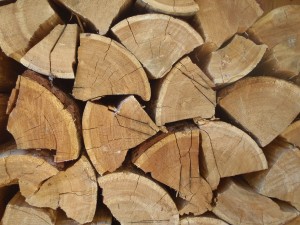INDOOR BURNING
If you rely on wood burning to heat your home, then there are a number of steps you can take to reduce wood burning pollution:
1. Replace your older wood burner with a new-technology appliance that meets the U.S. Environmental Protection Agency (EPA) and Canadian Standards Association (CSA) emissions standards. New certified appliances can help reduce the emissions of pollutants by up to 90 percent and are also more efficient at heating your home. With a new certified wood burner, you can reduce the amount of wood you burn by up to one third, which means savings in labour and costs.
2. Burn small, hot fires.
3. Burn seasoned wood; avoid green or wet wood. Firewood should be seasoned for at least six months.
4. Split wood into pieces that are 10-15 cm (4-6 in) in diameter. Fires burn better with more surface area exposed to the flame.
5. Never burn garbage, plastics, cardboard or Styrofoam. Burning garbage releases poisons.
6. Never burn treated or painted wood, particleboard or plywood as it represents a health hazard by releasing toxic chemicals.
7. Reduce your heating needs by making your house more energy efficient.
HEALTH AND ENVIRONMENTAL FACTORS:
Burning wood can release pollutants into the air we breathe when poor burning techniques are used. Wood smoke contains harmful pollutants that can trigger coughs, headaches and eye and throat irritation. Be sure to follow the above steps to keep our air fresh and healthy. If we all respect these guidelines, burning wood can be enjoyable for everyone.

